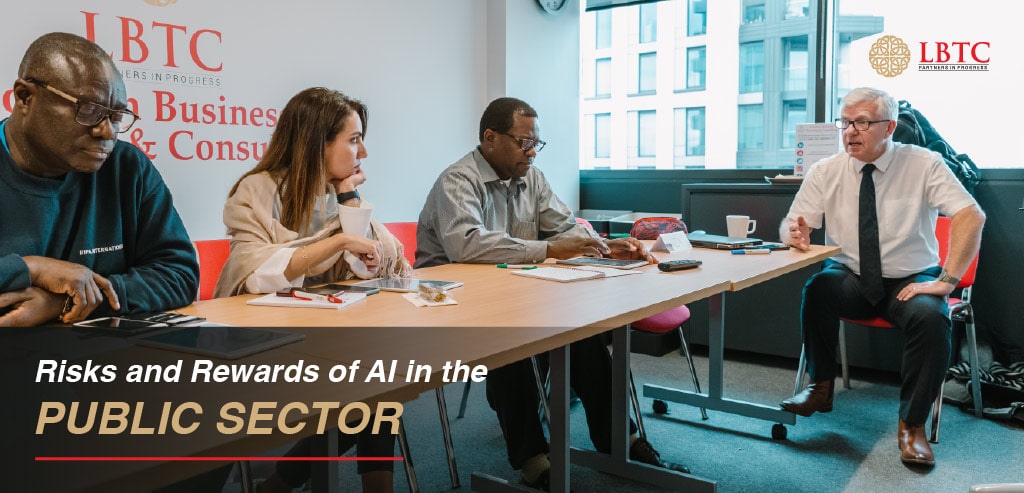
The public sector is not an exception to the way artificial intelligence (AI) is changing industries. AI promises to increase productivity, simplify procedures, and guide decision-making in a variety of fields, including national security, healthcare, and education. However, there are advantages and disadvantages of incorporating AI into public sector training, just like with any other potent instrument.
AI in Public Sector Training: Opportunities
The public sector has particular training issues because of its diverse personnel and intricate functions. AI provides creative ways to improve overall efficacy and learning results.
Personalised Learning Pathways: By taking into account variables like learning style, preferences, and professional objectives, AI can customise training sessions to meet the needs of each individual. AI can suggest particular modules or extra training by evaluating performance data, guaranteeing focused learning that improves abilities and productivity.
Enhanced Efficiency and Cost Savings: Repetitive tasks can be automated by AI, freeing up resources for more important duties. AI-powered training platforms can expedite tests and evaluations, increasing the effectiveness and economy of extensive training initiatives.
Data-Driven Decision Making: Administrators can find trends and areas for development with the use of AI’s ability to extract insightful information from training data. For example, an AI system can suggest focused extra training if it finds a problem that employees in a certain department share. A culture of continuous learning can be fostered by using this data-driven approach to guide operational and policy decisions.
Risks of AI in Public Sector Training
Even though AI has a lot of potential, integrating technology into public sector training is not without its difficulties.
- Bias and Fairness Concerns: AI programs pick up knowledge from the data they are given. The AI’s results will be biassed if the data is biassed. This might result in unjust treatment of particular groups in public sector training, restricting their access to resources or distorting learning outcomes. In order to provide fair training opportunities for everyone, algorithmic bias must be addressed and mitigated.
- Privacy and Security Risks: Workers in the public sector frequently deal with sensitive data. Strict privacy and security protocols are necessary while utilising AI-powered training tools in order to avoid data breaches. Data related to national security and personal information may be vulnerable to cyberattacks due to a hacked system.
- Resistance to Change: Employees may object to the introduction of AI because they are afraid of losing their jobs or find it difficult to adjust to the new technology. In order to get around this, companies need to promote a culture of lifelong learning and offer sufficient assistance and direction to enable staff members to seamlessly integrate into AI-enhanced training settings.
- Reliance on Technology Over Human Expertise: Although AI is very good at automation and analysis, it cannot take the place of human judgement. The public sector frequently depends on contextual awareness, empathy, and ethical considerations—qualities that AI does not possess. Thus, for well-informed decision-making and successful training results, a balanced strategy that incorporates both AI’s advantages and human insights is essential.
Best Practices for Implementing AI in Public Sector Training
To fully harness AI’s benefits in training while minimising associated risks, public sector organisations can adopt several best practices:
- Prioritise Transparency and Accountability: Employee trust is increased when training AI models are transparent. Organisations may promote accountability and transparency by making algorithms interpretable and provide concise justifications for AI-driven choices.
- Invest in Bias Detection and Mitigation: Potential biases can be found and addressed with the aid of routine audits of AI algorithms. By including bias detection tools in training programs, all modules are guaranteed to be inclusive and equitable.
- Implement Robust Data Security Protocols: Organisations must give data security first priority since public sector data is sensitive. Employee data can be protected from cyber dangers by encrypting it, enforcing stringent access rules, and routinely updating security procedures.
- Create a Culture of Lifelong Learning: Encourage employees to view AI as a tool to complement their roles rather than replace them. This can be achieved by integrating AI training within existing learning paths and providing resources that help employees understand AI’s role and potential benefits.
- Blend AI with Human Expertise: The best of both worlds can be obtained with a hybrid approach that combines AI technologies with human teachers. This method produces a thorough and efficient training experience by utilising AI’s analytical powers while integrating human skills and ethical issues.
Conclusion
AI has the power to revolutionise the workforce development through its ability to customise training, optimise workflows, and reveal insightful information. But it’s crucial to approach AI cautiously, keeping in mind inherent biases and privacy concerns.
Public sector organisations may fully utilise AI by implementing best practices and finding a balance between technology and human knowledge. This entails developing a learning environment in which artificial intelligence (AI) functions as a potent instrument, augmenting rather than replacing human talents. We can create a workforce that is more robust, equitable, and adaptive—ready to take on the problems of the future—by embracing this mutually beneficial partnership.

Leave a Reply